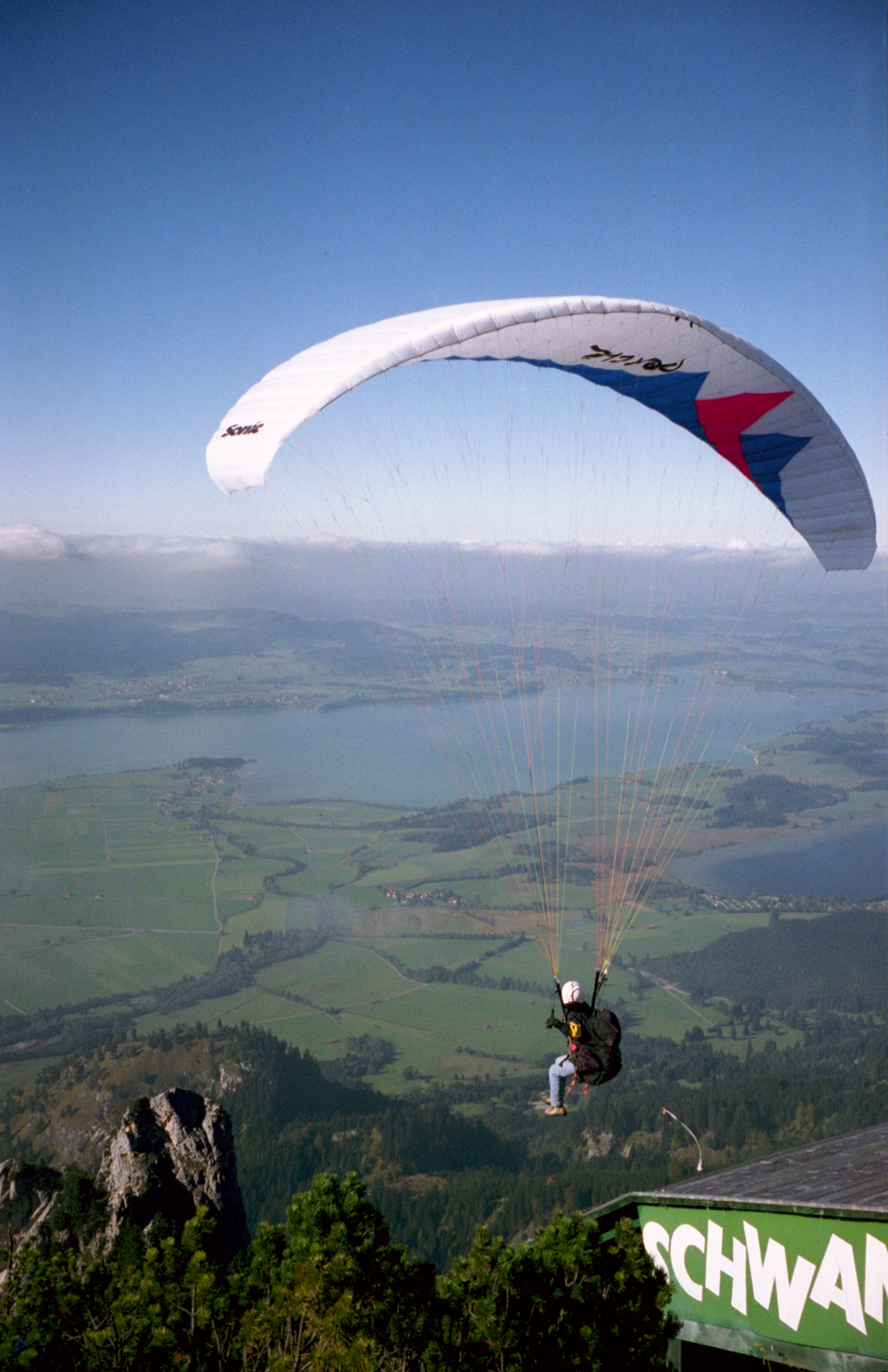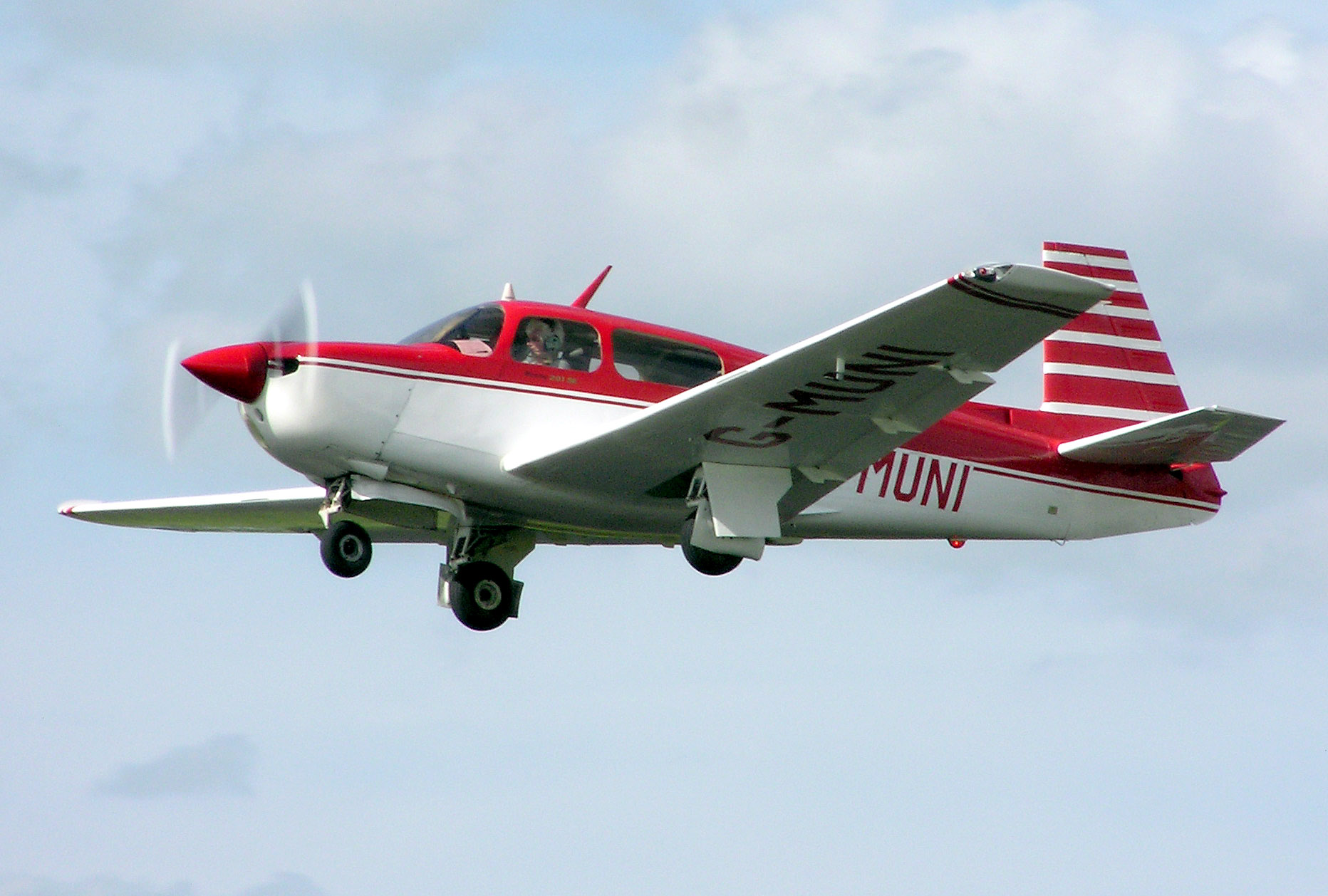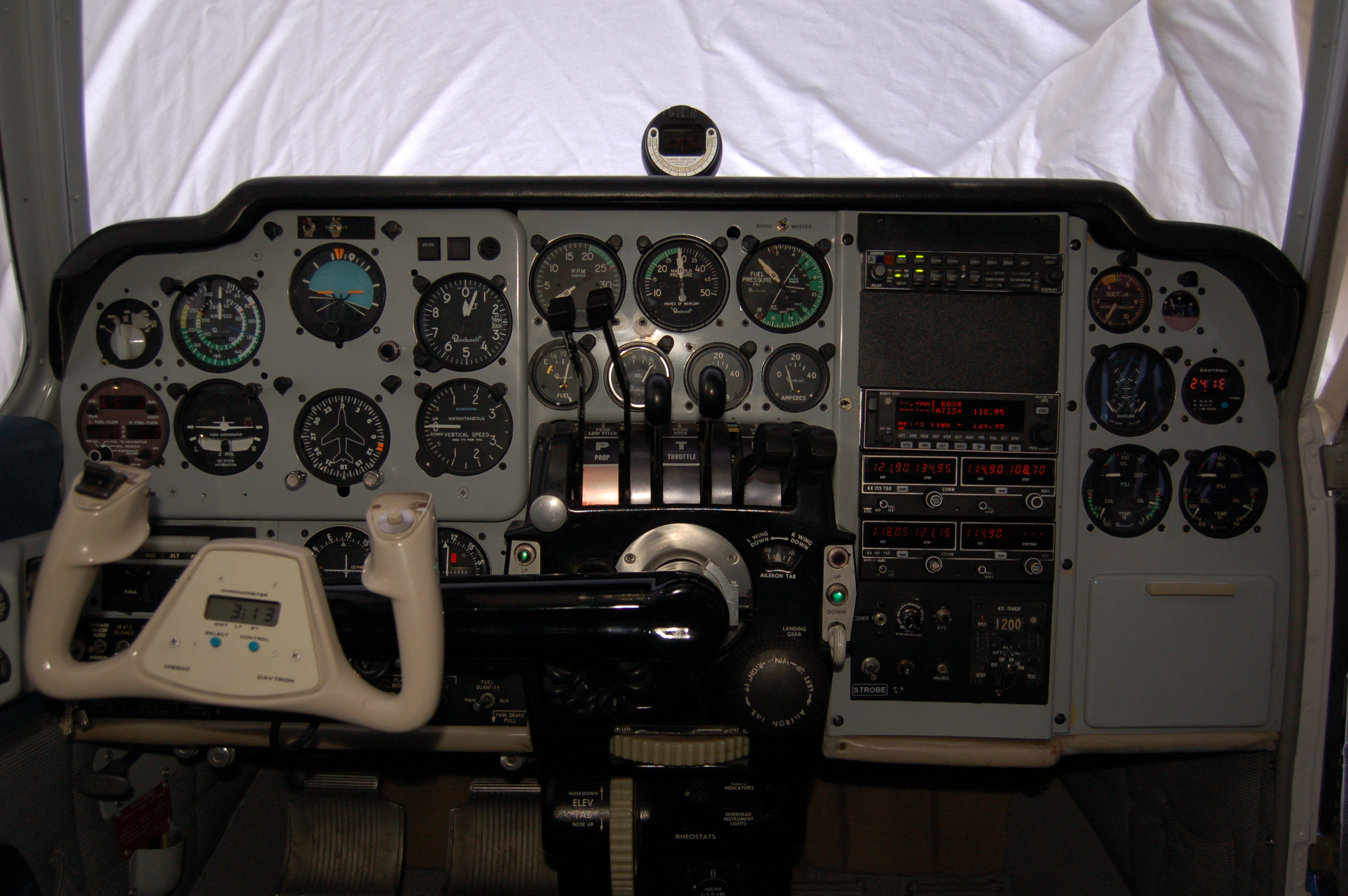|
Smith XP-99 Prop-Jet
The Smith X-99 Prop-Jet was a six-seat turboprop powered business aircraft designed in the United States in the 1980s. Only one was built. Design and development The Prop-Jet was an attempt to produce a small, propeller driven business aircraft capable of cruising at speeds above 350 mph (560 km/h). It was powered by a 550 shp (410 kW) Pratt & Whitney Canada PT6 turboprop engine, mounted in a long nose and driving a four blade, constant speed propeller. The fuselage was a monocoque constructed from graphite and glass-fibre epoxy sandwich. The pressurised cabin accommodated pilot and five passengers in three rows of seats, with a baggage space behind. Access was by port side doors forward and another over the trailing edge on the other side. The tail unit was made from Kevlar/graphite/glass fibre epoxy sandwich. The fin was swept and the tailplane mounted, with anhedral, almost at the top of it. The elevator carried an electrically driven trim tab. To ... [...More Info...] [...Related Items...] OR: [Wikipedia] [Google] [Baidu] |
WikiProject Aircraft
A WikiProject, or Wikiproject, is an affinity group for contributors with shared goals within the Wikimedia movement. WikiProjects are prevalent within the largest wiki, Wikipedia, and exist to varying degrees within Wikimedia project, sibling projects such as Wiktionary, Wikiquote, Wikidata, and Wikisource. They also exist in different languages, and translation of articles is a form of their collaboration. During the COVID-19 pandemic, CBS News noted the role of Wikipedia's WikiProject Medicine in maintaining the accuracy of articles related to the disease. Another WikiProject that has drawn attention is WikiProject Women Scientists, which was profiled by ''Smithsonian Magazine, Smithsonian'' for its efforts to improve coverage of women scientists which the profile noted had "helped increase the number of female scientists on Wikipedia from around 1,600 to over 5,000". On Wikipedia Some Wikipedia WikiProjects are substantial enough to engage in cooperative activities with outsi ... [...More Info...] [...Related Items...] OR: [Wikipedia] [Google] [Baidu] |
Dihedral (aircraft)
Dihedral angle is the upward angle from horizontal of the wings or tailplane of a fixed-wing aircraft. "Anhedral angle" is the name given to negative dihedral angle, that is, when there is a ''downward'' angle from horizontal of the wings or tailplane of a fixed-wing aircraft. Dihedral angle has a strong influence on dihedral effect, which is named after it. Dihedral effect is the amount of roll moment produced in proportion to the amount of sideslip. Dihedral effect is a critical factor in the stability of an aircraft about the roll axis (the spiral mode). It is also pertinent to the nature of an aircraft's Dutch roll oscillation and to maneuverability about the roll axis. Longitudinal dihedral is a comparatively obscure term related to the pitch axis of an airplane. It is the angle between the zero-lift axis of the wing and the zero-lift axis of the horizontal tail. Longitudinal dihedral can influence the nature of controllability about the pitch axis and the ... [...More Info...] [...Related Items...] OR: [Wikipedia] [Google] [Baidu] |
1980s United States Business Aircraft
__NOTOC__ Year 198 (CXCVIII) was a common year starting on Sunday of the Julian calendar. At the time, it was known as the Year of the Consulship of Sergius and Gallus (or, less frequently, year 951 ''Ab urbe condita''). The denomination 198 for this year has been used since the early medieval period, when the Anno Domini calendar era became the prevalent method in Europe for naming years. Events By place Roman Empire *January 28 **Publius Septimius Geta, son of Septimius Severus, receives the title of Caesar. **Caracalla, son of Septimius Severus, is given the title of Augustus. China *Winter – Battle of Xiapi: The allied armies led by Cao Cao and Liu Bei defeat Lü Bu; afterward Cao Cao has him executed. By topic Religion * Marcus I succeeds Olympianus as Patriarch of Constantinople (until 211). Births * Lu Kai, Chinese official and general (d. 269) * Quan Cong, Chinese general and advisor (d. 249) Deaths * Li Jue, Chinese warlord and rege ... [...More Info...] [...Related Items...] OR: [Wikipedia] [Google] [Baidu] |
LORAN
LORAN (Long Range Navigation) was a hyperbolic navigation, hyperbolic radio navigation system developed in the United States during World War II. It was similar to the UK's Gee (navigation), Gee system but operated at lower frequencies in order to provide an improved range up to with an accuracy of tens of miles. It was first used for ship convoys crossing the Atlantic Ocean, and then by long-range patrol aircraft, but found its main use on the ships and aircraft operating in the Pacific theater during World War II. LORAN, in its original form, was an expensive system to implement, requiring a cathode ray tube (CRT) display and a well trained operator. This limited use to the military and large commercial users. Automated receivers became available in the 1950s, but the same improved electronics also opened the possibility of new systems with higher accuracy. The U.S. Navy began development of Loran-B, which offered accuracy on the order of a few tens of feet, but ran into signi ... [...More Info...] [...Related Items...] OR: [Wikipedia] [Google] [Baidu] |
Hartzell Propeller
Hartzell Propeller is an American manufacturer that was founded in 1917 by Robert N. Hartzell as the Hartzell Walnut Propeller Company. It produces composite and aluminum propellers for certified, homebuilt, and ultralight aircraft. The company is headquartered in Piqua, Ohio.Purdy, Don: ''AeroCrafter - Homebuilt Aircraft Sourcebook'', page 84. BAI Communications. Hartzell also produces spinners, governors, ice protection systems, and other propeller controls. History Robert Hartzell grew up in the village of Oakwood, Ohio, just a block from Hawthorn Hill, where Orville Wright lived. From the 1890s until the late 1910s, Hartzell's father and grandfather operated a sawmill and lumber supply company in Greenville, Ohio (later moved to Piqua, Ohio) that also manufactured items such as wagons and gun stocks for World War I. On the side, Robert owned a small airplane and did maintenance on it as a young man. In 1917, Orville Wright suggested that Hartzell use his wal ... [...More Info...] [...Related Items...] OR: [Wikipedia] [Google] [Baidu] |
NACA Airfoil
The NACA airfoil series is a set of standardized airfoil shapes developed by this agency, which became widely used in the design of aircraft wings. Origins NACA initially developed the numbered airfoil system which was further refined by the United States Air Force at Langley Research Center. According to the NASA website: Four-digit series The NACA four-digit wing sections define the profile by: # First digit describing maximum Camber (aerodynamics), camber as percentage of the Chord (aircraft), chord. # Second digit describing the distance of maximum camber from the airfoil leading edge in tenths of the chord. # Last two digits describing maximum thickness of the airfoil as percent of the chord. For example, the NACA 2412 airfoil has a maximum camber of 2% located 40% (0.4 chords) from the leading edge with a maximum thickness of 12% of the chord. The NACA 0015 airfoil is symmetrical, the 00 indicating that it has no camber. The 15 indicates that the airfoil has a 15% thick ... [...More Info...] [...Related Items...] OR: [Wikipedia] [Google] [Baidu] |
Tricycle Undercarriage
Tricycle gear is a type of aircraft undercarriage, or ''landing gear'', that is arranged in a tricycle fashion. The tricycle arrangement has one or more nose wheels in a single front undercarriage and two or more main wheels slightly aft of the center of gravity. Tricycle gear aircraft are the easiest for takeoff, landing and taxiing, and consequently the configuration is now the most widely used on aircraft.Crane, Dale: ''Dictionary of Aeronautical Terms, third edition'', page 524. Aviation Supplies & Academics, 1997. Aviation Publishers Co. Limited, ''From the Ground Up'', page 11 (27th revised edition) History Several early aircraft had primitive tricycle gear, notably very early Antoinette planes and the Curtiss Pushers of the pre-World War I Pioneer Era of aviation. Waldo Waterman's 1929 tailless '' Whatsit'' was one of the first to have a steerable nose wheel. In 1956, Cessna introduced sprung-steel tricycle landing gear on the Cessna 172. Their marketing departme ... [...More Info...] [...Related Items...] OR: [Wikipedia] [Google] [Baidu] |
Flap (aeronautics)
A flap is a high-lift device used to reduce the stalling speed of an aircraft wing at a given weight. Flaps are usually mounted on the wing trailing edges of a fixed-wing aircraft. Flaps are used to reduce the take-off distance and the landing distance. Flaps also cause an increase in drag so they are retracted when not needed. The flaps installed on most aircraft are partial-span flaps; spanwise from near the wing root to the inboard end of the ailerons. When partial-span flaps are extended they alter the spanwise lift distribution on the wing by causing the inboard half of the wing to supply an increased proportion of the lift, and the outboard half to supply a reduced proportion of the lift. Reducing the proportion of the lift supplied by the outboard half of the wing is accompanied by a reduction in the angle of attack on the outboard half. This is beneficial because it increases the margin above the stall of the outboard half, maintaining aileron effectiveness and red ... [...More Info...] [...Related Items...] OR: [Wikipedia] [Google] [Baidu] |
Monoplane
A monoplane is a fixed-wing aircraft configuration with a single mainplane, in contrast to a biplane or other types of multiplanes, which have multiple wings. A monoplane has inherently the highest efficiency and lowest drag of any wing configuration and is the simplest to build. However, during the early years of flight, these advantages were offset by its greater weight and lower manoeuvrability, making it relatively rare until the 1930s. Since then, the monoplane has been the most common form for a fixed-wing aircraft. Characteristics Support and weight The inherent efficiency of the monoplane is best achieved in the cantilever wing, which carries all structural forces internally. However, to fly at practical speeds the wing must be made thin, which requires a heavy structure to make it strong and stiff enough. External bracing can be used to improve structural efficiency, reducing weight and cost. For a wing of a given size, the weight reduction allows it to fly slowe ... [...More Info...] [...Related Items...] OR: [Wikipedia] [Google] [Baidu] |
Beechcraft Baron 58
The Beechcraft Baron is a light twin-engined piston aircraft designed and produced by Beechcraft. The aircraft was introduced in 1961. A low-wing monoplane developed from the Travel Air, it remains in production. Design and development The direct predecessor of the Baron was the Beechcraft 95 Travel Air, which incorporated the fuselage of the Bonanza and the tail control surfaces of the T-34 Mentor military trainer. To create the new airplane, the Travel Air's tail was replaced with that of the Beechcraft Debonair, the engine nacelles were streamlined, six-cylinder engines were added, and the aircraft's name was changed. In 1960, the Piper Aztec was introduced, using two Lycoming O-540 engines; Cessna too had improved its 310 with two Continental IO-470 D, producing . Meanwhile, Beechcraft's Bonanza had been improved with a Continental IO-470-N. But the answer to competition was to make a true twin-engined variant of the Bonanza. The first model, the 55, was powered ... [...More Info...] [...Related Items...] OR: [Wikipedia] [Google] [Baidu] |
Trim Tab
Trim tabs are small surfaces connected to the trailing edge of a larger Flight control surfaces, control surface on a boat or aircraft, used to control the trim of the controls, i.e. to counteract hydro- or aerodynamic forces and stabilise the boat or aircraft in a particular desired Orientation (geometry), attitude without the need for the operator to constantly apply a control force. This is done by adjusting the angle of the tab relative to the larger surface. Changing the setting of a trim tab adjusts the neutral or resting position of a control surface (such as an Elevator (aircraft), elevator or rudder). As the desired position of a control surface changes (corresponding mainly to different speeds), an adjustable trim tab will allow the operator to reduce the manual force required to maintain that position—to zero, if desired. Thus the trim tab acts as a servo tab. Because the Center of pressure (fluid mechanics), center of pressure of the trim tab is farther away from t ... [...More Info...] [...Related Items...] OR: [Wikipedia] [Google] [Baidu] |






